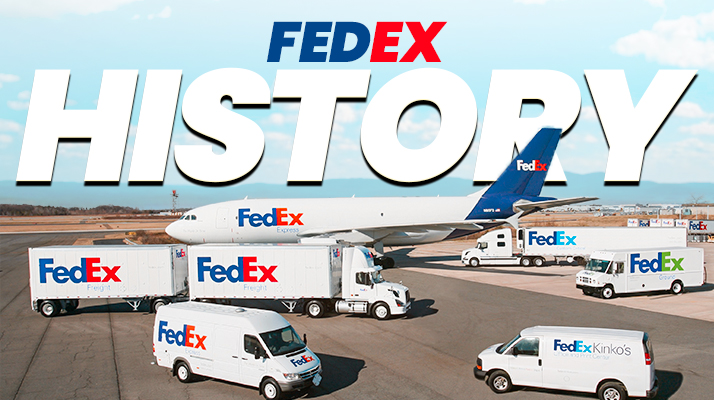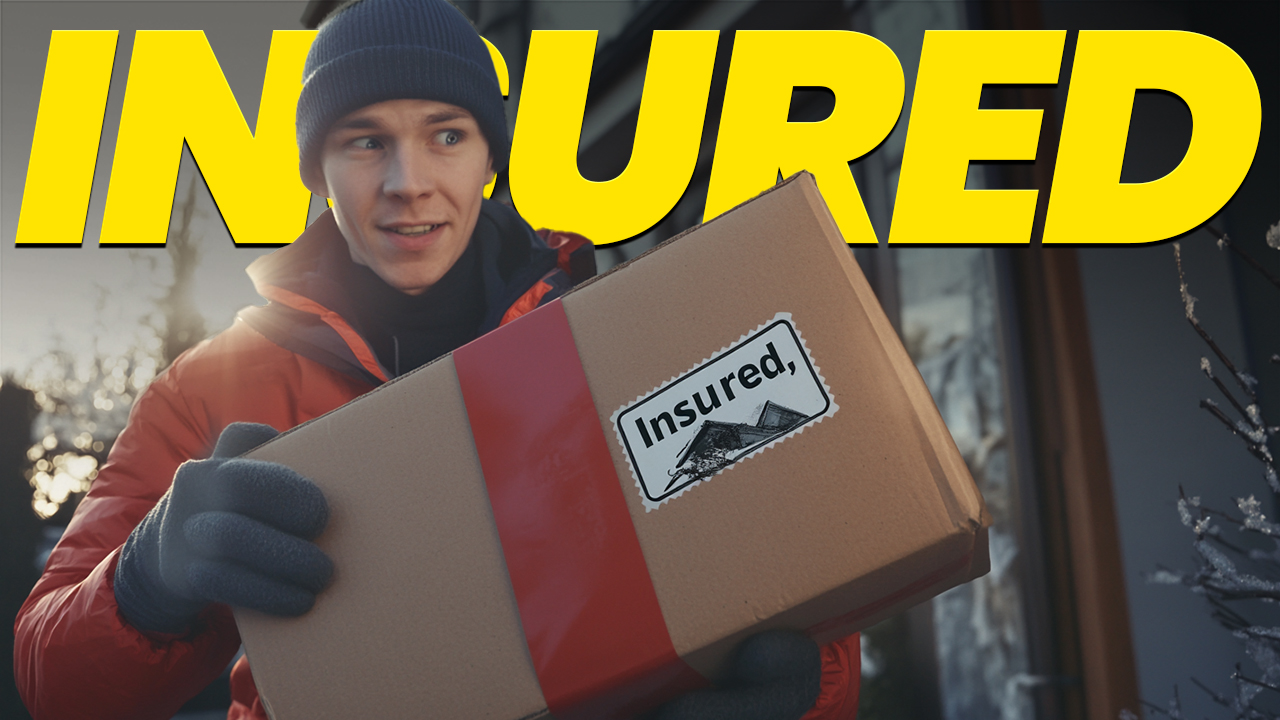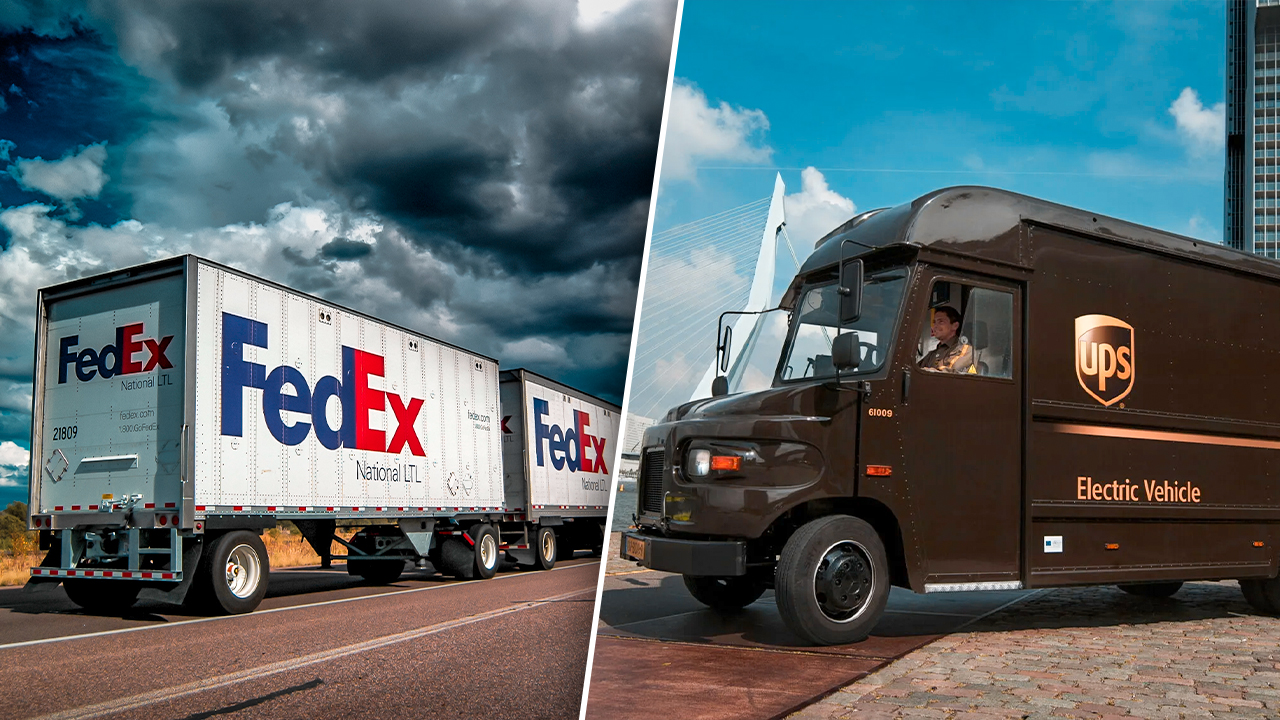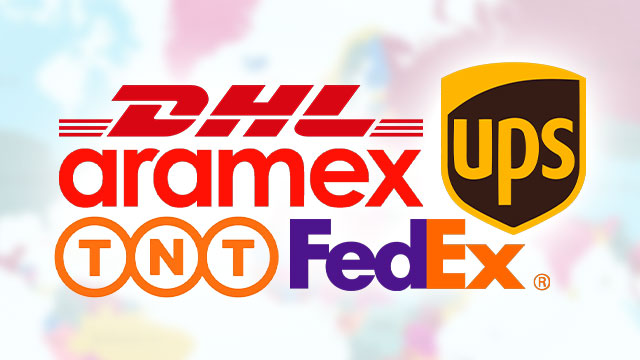Should you Insure packages you ship
What Are the Different Types of Package Insurance?
- Carrier-provided Insurance
- Third-party Insurance
How Do You Insure Packages?
- Through the Carrier
- Through a Third-party Insurance Provider
What Factors Should You Consider When Choosing Package Insurance?
- Value of the Package
- Destination and Delivery Time
- Type of Carrier
- Type of Package
What Are the Alternatives to Package Insurance?
- Self-insurance
- Declaring a Higher Value for the Package
When shipping valuable items, the question of whether to invest in package insurance often arises.
With the potential risks of loss, damage, or theft during transit, understanding package insurance becomes crucial. This article breaks down the essentials, addressing what package insurance is, its necessity, shipping insurance costs, coverage options, and the various types available.
We will also explore how to insure your packages effectively and weigh the alternatives. By the end, you will be equipped to make an informed decision about protecting your shipments.
What is Package Insurance?
Package insurance is a form of coverage that protects eCommerce sellers from financial loss due to shipping mishaps such as lost packages, damaged items, or package theft during transit. This insurance can be crucial for businesses that deal with high-value items, as it helps ensure customer satisfaction by meeting customer expectations and providing a safety net for unexpected shipping incidents. Given the complexities of shipping regulations and the variety of shipping carriers available, package insurance has become a vital component of the shipping process for modern online retailers.1. Is Package Insurance Necessary?
Determining whether package insurance is necessary depends on various factors, including the value of the items being shipped and the reliability of the chosen shipping carriers. For eCommerce sellers, package theft and shipping mishaps can lead to significant financial losses, making insurance a vital consideration to meet customer expectations and protect their business investments. In today's competitive eCommerce landscape, addressing shipping costs and potential risks with a robust insurance policy can also enhance the overall customer experience.What Are the Risks of Not Insuring Packages?
Not insuring packages can expose eCommerce sellers to significant risks, including financial losses from shipping mishaps, lost packages, and damaged items. These risks can ultimately lead to a negative customer experience, tarnishing a brand's reputation and potentially resulting in lost sales. Without appropriate shipping practices and risk analysis, businesses may find themselves unprepared for unforeseen incidents that insurance could have mitigated.When evaluating the importance of package insurance, one must consider the cascading effects of not having it. For instance, if a shipment goes missing or arrives in a damaged state, customers may not only seek replacements but also demand refunds, which can quickly erode a seller’s profit margins.
Such incidents can create a ripple effect: customer dissatisfaction leads to negative reviews, which can deter future buyers. These negative experiences can develop a sense of distrust towards a brand, compelling customers to turn to competitors who prioritize their interests.
Without the safety net that insurance provides, businesses may also need to allocate resources towards resolving complaints instead of focusing on growth strategies.
- Increased operational costs due to handling disputes.
- Potential legal ramifications over customer satisfaction.
- Lack of trust impacting customer loyalty.
Ultimately, investing in shipping insurance not only protects a seller's finances but also enhances the overall customer experience, fostering long-term relationships and stability in the market.
2. How Much Does Package Insurance Cost?
The cost of package insurance can vary significantly based on factors such as shipping insurance costs, coverage limits, and the declared value of the items being shipped. Online retailers must navigate different insurance policies offered by various shipping carriers, including USPS, FedEx, and UPS, to find the most cost-effective solutions that align with their shipping rates and customer expectations. By analyzing these costs against potential financial losses from shipping mishaps, businesses can make informed decisions regarding their insurance needs.3. What Does Package Insurance Cover?
Package insurance typically covers a range of incidents, including lost packages, damaged items, and theft, providing replacement items or reimbursement to the affected parties. This coverage is particularly important for high-value items, ensuring that sellers have the necessary shipping documentation and support during the claims process. Understanding what package insurance covers can help eCommerce sellers protect their investments and provide better customer service through smooth insurance claims.What Are the Common Exclusions of Package Insurance?
While package insurance offers extensive coverage, there are common exclusions that eCommerce sellers should be aware of, including items not meeting shipping regulations or inadequate packaging requirements. Understanding these exclusions is crucial for ensuring effective claims resolution and preventing misunderstandings with shipping carriers. Sellers must familiarize themselves with the specific exclusions outlined in their insurance policies to avoid unexpected complications.For instance, items that are prohibited or restricted under carrier guidelines may not be covered, leading to substantial financial losses if those items are damaged or lost in transit. Inadequate packaging can also compromise the insurability of a product.
To help sellers navigate this complex landscape, here are some common exclusions, which are essential to understand when considering shipping insurance.
- Perishable goods: Items that have a limited shelf-life are often excluded due to their nature.
- Valuable collectibles: High-value items might require additional coverage that standard policies don’t offer.
- Items improperly packed: Claims may be denied if the seller fails to use appropriate packaging materials.
Hence, adhering to shipping regulations and ensuring proper packaging are not merely formalities but essential practices that can influence the success of any claims process.
4. What Are the Different Types of Package Insurance?
There are two primary types of package insurance that eCommerce sellers can consider: carrier-provided insurance and third-party insurance. Carrier-provided insurance is typically included with the services of major shipping carriers like USPS, FedEx, and UPS, offering a basic level of protection. On the other hand, third-party insurance providers can offer more comprehensive coverage tailored to the unique needs of online retailers, potentially covering high-value items and specialized shipping scenarios.Carrier-provided Insurance
Carrier-provided insurance, such as USPS insurance, FedEx insurance, and UPS insurance, offers a straightforward way for eCommerce sellers to protect their shipments during transit. These policies typically have defined coverage limits, ensuring that sellers receive compensation for lost or damaged packages up to a certain amount. The coverage options and claims processes may vary significantly between carriers, making it essential for online retailers to understand the specific terms and conditions.In essence, this type of insurance works by allowing sellers to opt for coverage based on the value of the shipment. For example, USPS provides coverage up to $5,000 for Priority Mail, while FedEx offers varying limits depending on the service type chosen.
- USPS: Coverage ranges from $2.20 for items valued under $50 to $5,000 for higher-value packages.
- FedEx: Claims can be filed for lost or damaged items, with maximum coverage often limited to $100 unless additional insurance is purchased.
- UPS: Offers insurance coverage that can reach up to $50,000 for most shipping options but may require special arrangements for higher values.
The claims process is another critical aspect; it generally involves documenting the loss or damage, submitting a claim form, and providing proof of value. Sellers need to be proactive in keeping records and receipts to ensure a smooth experience.
Understanding these differences can ultimately help sellers choose the most appropriate coverage for their business needs.
Third-party Insurance
Third-party insurance provides an alternative option for eCommerce sellers seeking more comprehensive coverage than what is typically offered by carrier-provided insurance.
By opting for third-party insurance, sellers can greatly enhance their peace of mind, ensuring that their shipments are safeguarded against potential losses or damages during transit. Various shipping insurance providers specialize in tailored shipping solutions, often covering replacement items and higher-value shipments, which can be crucial for businesses dealing with unique or high-risk products. This flexibility allows sellers to choose insurance plans that best fit their operational needs and customer expectations.
- Coverage Options: Third-party providers typically offer diverse coverage levels, from basic to all-risk policies.
- Claims Processes: Many of these providers streamline the claims process, making it user-friendly and efficient.
- Comparisons: When compared to carrier-provided insurance, third-party options often deliver better value and more comprehensive terms.
5. How Do You Insure Packages?
Insuring packages involves following specific shipping requirements and utilizing the appropriate shipping tools offered by various carriers. eCommerce sellers can insure their packages either through the shipping carrier directly or by opting for third-party insurance, depending on their needs and preferences. Each method has its own set of shipping guidelines and processes, making it essential for sellers to understand how to navigate the shipping claims process effectively should an issue arise during transit.Through the Carrier
When insuring packages through the carrier, eCommerce sellers can easily add shipping insurance to their shipments with services like USPS, FedEx, and UPS. This process typically involves selecting the insurance options during the shipping label creation, allowing sellers to declare the value of their packages and understand the associated costs, including shipping rates. Ensuring compliance with shipping practices is crucial when opting for carrier-provided insurance, as specific guidelines must be followed.Utilizing these insurance offerings means that sellers should be prepared to provide key details regarding the shipment, including shipping records.
These details often include:
- Package dimensions and weight
- Declared value of the content
- Shipping destination
- Contents description (including item type)
In addition, understanding the premium costs associated with various coverage levels is essential for managing expenses effectively. Accurate value declaration is not just a formality but a necessity to ensure that any potential claims can be adequately processed in the event of loss or damage. By meticulously following these steps, eCommerce sellers can secure their shipments and provide peace of mind for both themselves and their customers.
Through a Third-party Insurance Provider
To insure packages through a third-party insurance provider, eCommerce sellers typically need to create an account with the provider and submit the necessary shipping documentation, including the value of the items being shipped, such as high-end headphones. Many third-party insurance providers, like Shipsurance, offer user-friendly platforms that streamline the claims process, allowing sellers to manage their insurance efficiently. This option is particularly beneficial for businesses shipping high-value or fragile items that may require specialized cargo insurance.Plus creating an account, eCommerce sellers should gather essential shipping documents such as receipts, packing lists, and tracking numbers, which are vital for securing coverage and facilitating future claims, especially when dealing with shipping policies.
Once the shipping documentation is submitted, it is crucial to understand the claims process:
- Review insurance policies thoroughly to identify coverage limits and exclusions.
- Submit claims promptly in case of loss or damage, ensuring all required evidence is attached.
- Monitor the status of claims through the provider's platform for quick resolutions.
By utilizing third-party insurance, eCommerce sellers benefit from enhanced protection and peace of mind, ultimately allowing them to focus on growing their business without the worry of potential shipping mishaps, particularly when shipping valuable items.
6. What Factors Should You Consider When Choosing Package Insurance?
When choosing package insurance, eCommerce sellers should consider several factors, including the item type, shipping requirements, and the associated shipping rates. Conducting a thorough risk analysis is essential to determine the level of coverage needed to meet customer expectations and safeguard against potential financial losses. Understanding these factors can help businesses make informed decisions regarding their shipping policies and insurance options.Value of the Package
The value of the package is a critical factor to consider when selecting insurance, especially for high-value items that may be more susceptible to package theft or damage during transit, such as freight insurance options.
When shipping luxury goods, electronics, or collectibles, the declared value plays a significant role in determining the level of coverage required. eCommerce sellers need to assess how the worth of each item not only influences their insurance decisions but also affects their overall shipping costs.
In scenarios where items are particularly valuable, adequate coverage becomes essential, including options for cargo insurance, as it safeguards against losses that could stem from theft or unforeseen damage. The cost of shipping these items can escalate alongside their declared value, necessitating a careful evaluation of both expenses and potential hazards involved in transit.
- High-value items often attract higher insurance premiums.
- Increased declared values may lead to stricter security measures during shipping.
- Weighing the risks can help sellers decide on optimal insurance options.
Destination and Delivery Time
The destination and delivery time are crucial considerations when selecting package insurance, as different shipping companies may offer varying levels of coverage based on the shipping solutions they provide. Understanding these factors can significantly impact financial outcomes.Regarding shipping decisions, a variety of elements should be taken into account, including shipping containers. For example, consumers should evaluate the following aspects:
- Shipping Rates: Rates can fluctuate based on location, urgency, and carrier, influencing overall costs.
- Carrier Reputation: Different carriers have varying reputations regarding delivery reliability and claims handling.
- Delivery Confirmation: This feature adds an extra layer of security, enabling customers to monitor their packages, thereby ensuring the shipment reaches its intended destination.
Ultimately, all these considerations contribute to a more informed choice about package insurance, ensuring both timely delivery and peace of mind, particularly for delivery confirmation.
Type of Carrier
The type of carrier selected for shipping can significantly affect the insurance options available to eCommerce sellers, especially when evaluating shipping companies. Major carriers like USPS, FedEx, and UPS each have their own policies and practices regarding insurance coverage, which can impact both the costs and claims process. Understanding the differences between these shipping carriers can help sellers choose the best option for their specific needs and customer expectations.When evaluating shipping options, sellers should be aware that major players in the industry, such as USPS, FedEx, and UPS, vary widely in their insurance offerings. For instance:
- USPS: Provides limited insurance coverage for priority mail, with options for additional coverage at a nominal fee.
- FedEx: Offers comprehensive coverage, including declared value insurance that can cover the total value of the goods.
- UPS: Features a range of plans, allowing sellers more flexibility in coverage amounts based on the items being shipped.
This variance not only influences potential losses in the event of an incident but also shapes the claims process. For instance, while USPS has a straightforward, but sometimes slower, claims procedure, FedEx and UPS may offer expedited claims options, often impacting seller satisfaction.
Ultimately, understanding these nuances is essential for sellers aiming to safeguard their business against unforeseen shipping incidents.
Type of Package
The type of package being shipped is another essential consideration when selecting package insurance, as specific packaging materials and methods can influence the risk of damage or loss, including the choice of shipping containers. The choice of packaging can directly impact your insurance decisions, as inadequate protection increases vulnerability to various risks. High-value items typically require more robust packaging and insurance coverage to mitigate potential risks during transit. Conducting a thorough risk analysis based on the packaging requirements can provide insights into the best insurance options available for different types of packages, ensuring adherence to best practices.Understanding the nuances of packaging is crucial, as certain materials offer better protection than others.
- For fragile items, materials like bubble wrap and foam inserts are advisable.
- Heavier items may necessitate double-walled boxes to withstand pressure.
- Temperature-sensitive goods often require insulated packaging to safeguard against environmental changes.
Consequently, selecting the right packaging not only protects the item but also plays a pivotal role in ascertaining the appropriate coverage level.
Engaging in a comprehensive risk analysis, taking into account factors such as handling methods and shipping conditions, enhances decision-making related to shipping requirements and ultimately leads to more effective insurance planning, including transit insurance options.
7. What Are the Alternatives to Package Insurance?
Alternatives to package insurance include self-insurance and declaring a higher value for the package, which can help mitigate potential losses without traditional insurance coverage, especially for items requiring freight insurance. Self-insurance involves setting aside funds to cover potential shipping mishaps, allowing eCommerce sellers to manage risks on their own while considering the implications of shipping claims. Additionally, accurately declaring the value of packages can provide a layer of protection and support in the shipping process, particularly when dealing with various shipping solutions and practices.Self-insurance
Self-insurance allows eCommerce sellers to manage their own risk by setting aside funds to cover potential shipping mishaps instead of relying on traditional insurance policies. This approach requires careful risk analysis and understanding of shipping practices to ensure that adequate funds are available to address possible losses. While self-insurance can offer financial flexibility, it may come with its own set of challenges regarding how to allocate funds effectively.By choosing the self-insurance model, businesses can retain more control over their funds, allowing for strategic allocation tailored to their specific shipping needs. Effective fund allocation is crucial, as it helps sellers prepare for unforeseen circumstances such as delays or lost packages. Self-insurance is not without disadvantages. For instance, without a safety net provided by traditional insurance, unforeseen events can lead to significant financial strain.
- Benefits:
- Cost savings over time
- Greater management control
- Drawbacks:
- Potential for insufficient funds
- Increased responsibility for losses
To navigate these challenges effectively, conducting thorough risk analysis and continuously adjusting allocation strategies in response to shipping trends is essential.
Declaring a Higher Value for the Package
Declaring a higher value for the package can serve as a protective measure in the shipping process, particularly when it comes to facilitating insurance claims in case of loss or damage. By accurately declaring the value, eCommerce sellers can align their shipping practices with potential risks and provide better clarity to shipping carriers regarding their coverage needs. This can enhance the likelihood of a smooth claims process should an incident arise.Ensuring the correct value declaration not only protects the seller but also builds trust with customers who expect their purchases to be safeguarded during transit. When sellers take this extra step, they can benefit in multiple ways:
- Risk Mitigation: Higher declared values mean better insurance provisions, which mitigate potential financial losses.
- Enhanced Customer Satisfaction: Customers feel more secure knowing that valuable items are fully insured.
- Compliance with Shipping Policies: Many carriers have strict guidelines regarding declared values; adhering to these can prevent unexpected fees or shipment delays.
Prioritizing accurate declaration practices in shipping not only aligns with best practices but also fosters positive relationships between sellers, carriers, and customers alike.
8. Conclusion: Is Package Insurance Worth It?
In conclusion, package insurance is a worthwhile investment for eCommerce sellers, providing essential protection against potential shipping mishaps and enhancing the overall customer experience.When navigating the complexities of modern eCommerce, it's vital to recognize that package insurance acts as a safety net that can prevent substantial financial losses. Many sellers often underestimate the risks associated with shipping, yet the reality is that items can be damaged, lost, or stolen during transit.
Understanding the necessity of package insurance not only protects the seller’s bottom line but also significantly boosts customer satisfaction, as it ensures that shoppers feel secure in their purchases.
- Package insurance mitigates risks related to high-value items.
- It promotes confidence among customers, thereby increasing repeat purchases.
- In addition, an efficient claim process can enhance a seller’s reputation.
Essentially, integrating package insurance into your shipping solutions not only addresses potential issues but also fosters a reliable and trustworthy relationship with customers.
9. Frequently Asked Questions
Should you insure packages you ship?
Yes, it is highly recommended to insure packages you ship, especially if they contain valuable or fragile items.
How much does package insurance cost?
The cost of package insurance varies depending on the value of the package and the carrier used. It is usually a small percentage of the total value of the package.
Is package insurance necessary?
While it is not mandatory, package insurance provides added protection and peace of mind for both the sender and the recipient.
Does package insurance come automatically with carriers?
No, carriers do not automatically include package insurance in their services. It is an additional option that can be selected by the sender.
What items should you consider insuring?
Valuable items such as jewelry, electronics, and artwork should always be insured when shipping. Delicate or fragile items may also benefit from insurance.
Are there any limitations to package insurance?
Some carriers may have restrictions on what items can be insured or the maximum coverage amount. It is important to check with the carrier beforehand for their specific policies.







